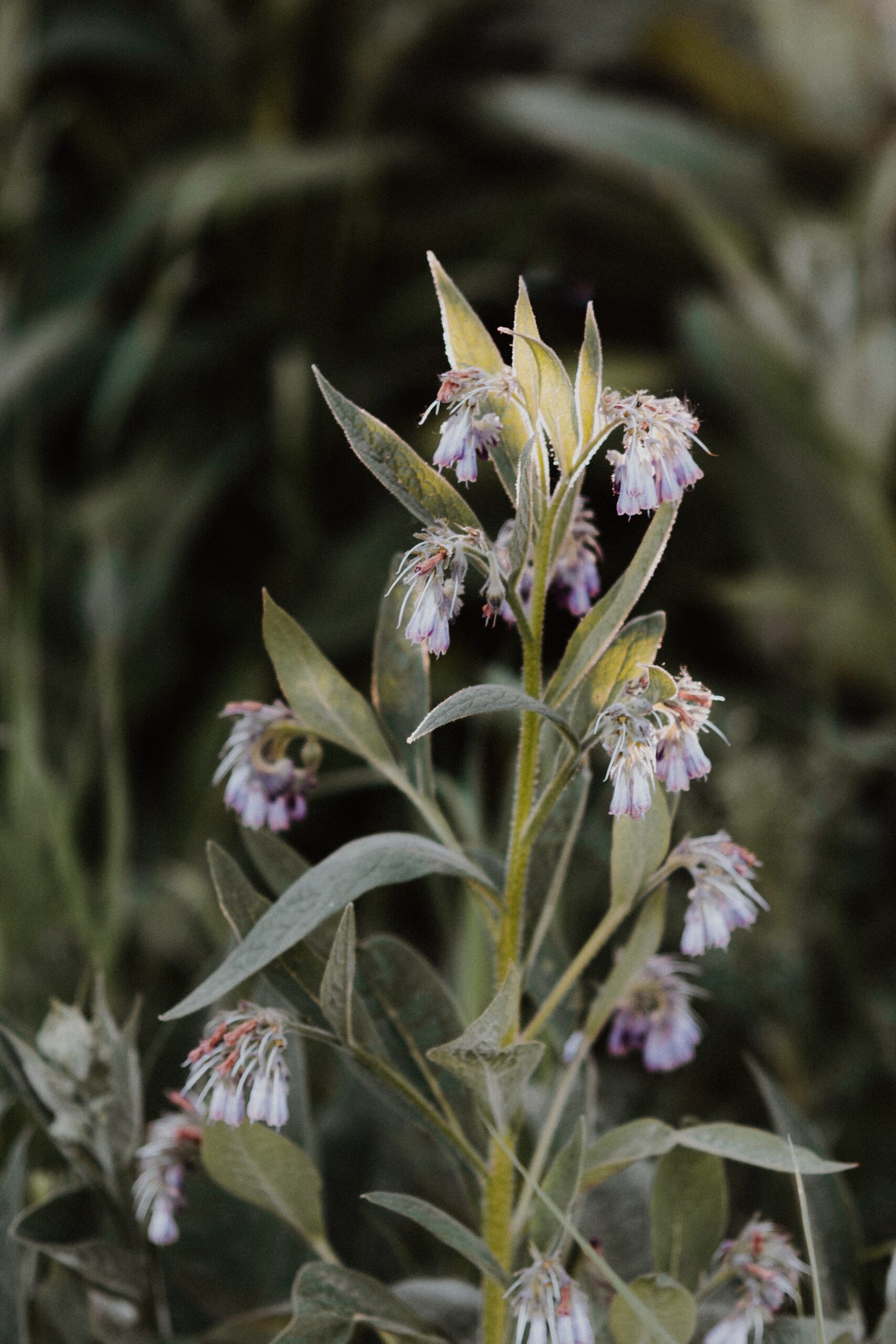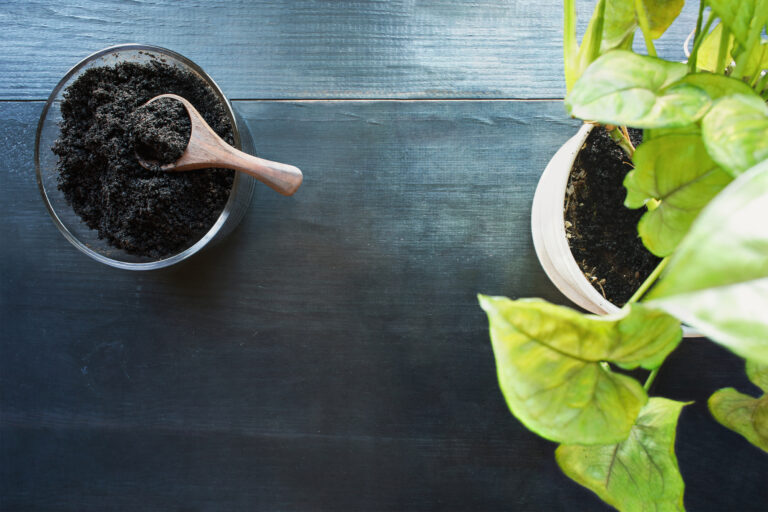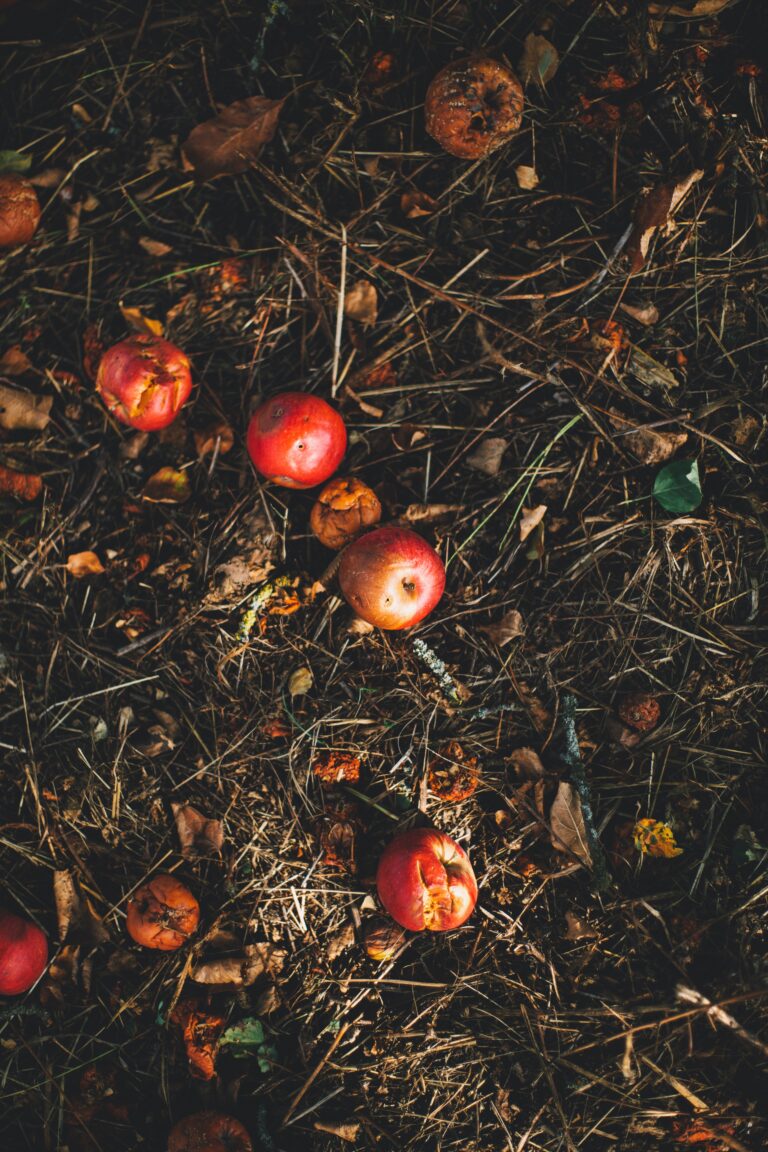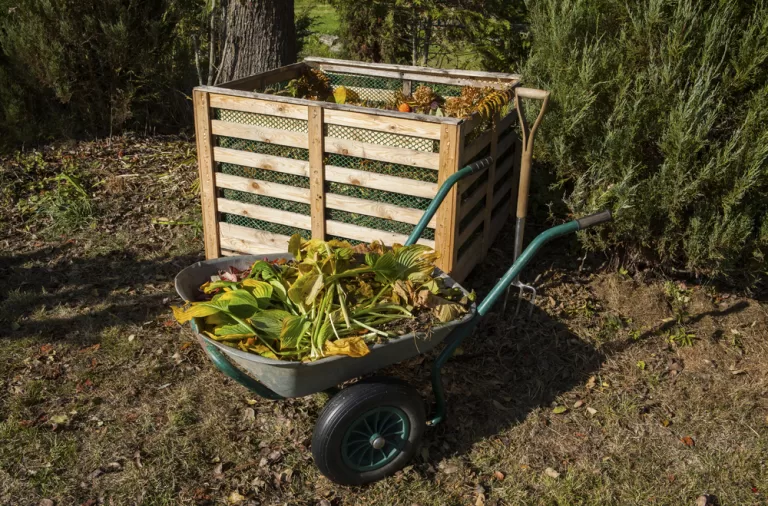Using Comfrey in the Garden and in the Kitchen: From Soil Savior to Culinary Hero
Comfrey, that herbaceous perennial that brings both gardeners and chefs running—or perhaps, cautiously approaching, thanks to its prickly leaves—is a plant of many surprises. Long leveraged for its medicinal properties, comfrey has snuck its way into the hearts of those who whisper to plants and those who wield spatulas with equal reverence. With leaves that tout a wealth of nutrients and a personality that makes it a garden heavyweight, comfrey has more uses than a Swiss Army knife.
In the garden, comfrey is the friend that keeps on giving. It spreads with the enthusiasm of a child in a candy store, providing ample greenery and making itself useful in ways one might not initially guess. It moonlights as a fertilizer friend, with its deep roots bringing up nutrients like potassium, phosphorus, and nitrogen from the depths of the soil, and offering them up to its less industrious neighbors through its decomposing leaves.
But let’s not confine comfrey to the confines of compost piles and plant food. In the kitchen, this green giant makes culinary waves when used with caution and wisdom. Its leaves, once softened and stripped of their hairy exterior, can be transformed into delightful additions to stews, soups, and the adventurous chef’s salads. While it’s not the usual basil or oregano you might reach for, comfrey asks—nay, demands—to be recognized for its unconventional yet tasty contribution to the culinary table.
Comfrey Chronicles: A History
Who knew that a leafy green herb could swagger through history? Comfrey, with its stretching leaves and bell-shaped flowers, has been more than just a plant—it’s been a garden celebrity in its own right.
Ancient Green Thumbs
Location: Gardens of Yesteryear
Use: Medicinal Marvel
Ancient civilisations didn’t just throw comfrey in the mix for giggles. They had the herbal hotline and knew this plant was a call worth answering. Priests and healers were fans, using comfrey to bind wounds and treat a slew of ailments. It worked its magic from Europe to Asia, and its reputation grew with every poultice and potion.
- Greeks & Romans: Not just toga enthusiasts, they were comfrey connoisseurs.
- Traditional Medicine: Comfrey’s resume boasted topical healer status.
Modern Garden Revival
Era: Late 20th Century to Present
Image: Comfrey’s Comeback Tour
Fast forward a few centuries—comfrey makes a comeback! No longer just a healer, it transforms into an organic gardening sensation. This plant becomes the VIP in veggie plots and permaculture parties, bringing nutrients to the soil that would make a fertilizer blush. It’s the unsung hero of compost heaps and the plant that keeps on giving.
- Organic Gardening: Comfrey takes center stage.
- Permaculture: A key player in sustainable gardening orchestras.
The Great Comfrey Debate: Benefits vs Risks
Comfrey is a bit like the guest who brings a gourmet dish to the party but then double-dips in the salsa. It’s got its fabulous upsides and its potential for not-so-fabulous downsides.
Pros of Plant Power
- Nutrient-Rich Soil Amendment: This leafy green is a compost enthusiast’s dream, packed with nitrogen, phosphorus, and potassium — the VIPs of the plant nutrient world.
- Foliage Fertilizer: Comfrey leaves decay quicker than a New Year’s resolution, releasing their nutrients rapidly and making them an excellent green manure or mulch.
The Cons List: Handle with Care
- Containment Strategy Required: Comfrey spreads faster than gossip in a tiny town. If gardeners aren’t careful, it can take over like a botanical bully.
- Medicinal Maze: Symphytum officinale has a history in herbal medicine, but they should handle its use like they’re texting an ex — with extreme caution; comfrey contains compounds that can be toxic to the liver if ingested improperly.
Gardening Giggles with Comfrey
Comfrey has become the garden’s knee-slapper, tickling green thumbs with its rapid growth and hardy nature.
Root Revelry: Planting & Growing
When one decides to plant comfrey, they’re not just growing a plant; they’re hosting a root-based party in the soil. Comfrey roots are the life of the garden soiree, breaking ground with gusto and spreading with a tenacity that would make a mole blush. Here’s a glimpse of the underground fest:
- Depth and Distance: Plant roots at least 2 feet apart and 2 inches deep for optimal elbow room.
- Soil Spectacle: Comfrey isn’t fussy about soil, but well-drained loam makes it do a happy dance.
Leafy Shenanigans: Harvesting Tips
Harvesting comfrey leaves is where the giggles grow louder, as these leaves can be cut not once but several times a season, making one feel like a garden barber on speed dial. Below are tips to ensure the shears are ready to keep up with the comfrey’s comedic growth rate:
- Harvest Havoc: Expect to harvest comfrey leaves up to four or five times during the growing season; they grow back faster than a comedian’s wit.
- Size Matters: Cut leaves when they’re around 2 feet tall for maximum guffaws and nutrient density.
Culinary Capers: Comfrey in the Kitchen
Comfrey may be more familiar as a garden ally for plants, but it’s also tiptoed its way into the adventurous chef’s cookbook. Below are some flavorful ideas and key safety tips for introducing comfrey to your kitchen escapades.
Cooking Comrade: Recipe Ideas
Comfrey Fritters:
An intrepid cook might mix finely chopped young comfrey leaves with a trusty batter of flour, eggs, and milk. Fry them in shallow oil until crispy—a surprising twist on greens.
Comfrey Leaf Tea:
Steep dried comfrey leaves in hot water for about 15 minutes. They’ll brew a conversation-starting tea. Best enjoyed with a raised eyebrow and an open mind.
Stuffed Comfrey Leaves:
Think grape leaves but bolder. Blanche large comfrey leaves, pat them dry, and roll them up with a mix of cooked rice, herbs, and your choice of protein. They will make the guests guess twice what they’re munching on.
Toxic or Tasty? Understanding Safety
When someone whispers “comfrey,” ears perk up for two reasons: its herbal power and the safety debate. Rest assured, comfrey contains compounds called pyrrolizidine alkaloids (PAs), which can cause liver damage when consumed in large quantities over time.
Ingesting Comfrey:
It is advised to use caution when eating comfrey. Safest bet is to stick to young leaves in small quantities and to avoid long-term consumption.
Topical Use:
While they might avoid a comfrey salad, many people safely use comfrey externally. Comfrey creams and poultices are widely used for their reputed skin-healing properties.
Comfrey Comrades: Companion Planting
In the matchmaking world of gardens, comfrey plays wingman to many a plant, boosting their health and happiness. Just remember, not all plant relationships are a match made in heaven.
Plant Pals
Comfrey thrives alongside a variety of plants, doling out benefits like a generous garden grandmother. Below is a list of comfrey’s companionable cohorts:
| Companions | Benefits |
|---|---|
| Tomatoes | With its deep taproots, comfrey mines nutrients like potassium, a tomato’s favorite snack. |
| Cabbage | Comfrey serves as a living mulch, conserving moisture and suppressing weeds around its cabbage buddies. |
| Berry Bushes | It shares its wealth of calcium, improving berry health and taste—talk about berry nice friends! |
Foes of Foliage: Avoid These Pairings
But beware, comfrey doesn’t gel with everyone. Some plants might throw a garden tantrum if paired with our leafy mediator. For a harmonious garden, steer clear of the following pairings:
- Beans and Peas: Legumes just don’t appreciate comfrey’s company; they prefer their own kin.
- Potatoes: Spuds get grumpy with too much comfrey around; they claim it’s too clingy.
Keep these friendships and feuds in mind to ensure a garden that’s less Mean Girls and more Sisterhood of the Traveling Plants.
DIY Delights: Comfrey Poultices & Teas
Grab your gardening gloves and your favorite mug! It’s time to get crafty with comfrey. They’re concocting poultices for those pesky aches and brewing up a storm with teas that’ll make their plants sing—or at least grow a little healthier.
Home Remedy Rib-Ticklers
Who knew that a leafy green could be the unsung hero of the home remedy world? Comfrey poultices have been the chatter of the town, or at least the whisper in the natural remedy circles.
- Ingredients:
- Fresh comfrey leaves
- Mortar and pestle (or a rolling pin in a pinch)
- Clean cloth or gauze
Instructions:
- Mashup Madness: They’ll pulverize those comfrey leaves into submission using the mortar and pestle—or give them a good ol’-fashioned thumping with the rolling pin.
- Squishy Situation: Place the resulting mash onto the cloth.
- Wrap Battle: Fold the cloth snugly around the mash, creating a secure little leafy burrito.
- Application Antics: Apply it to the skin where it feels like their muscles learned a new form of interpretative dance.
Word on the street is, they might enjoy a bit of cold relief or feel less fury from their inflamed nemesis, the sprain.
Brewing Brews & Potions
Now, lest they forget the thirsty plants in the corner, comfrey tea is a gem for the garden, and it’s simpler than teaching their cactus to high-five.
- Ingredients:
- Comfrey leaves
- Water
- A bucket or container with a lid
- Patience (a hefty sprinkle)
Directions:
- Leaf Liquor: They’ll plop those comfrey leaves into the bucket.
- Aqua Attack: Cover the leaves with water and bid them a fond farewell as they embark on their spa day.
- Lid Lovin’: Seal the deal with the lid to keep the potion private.
- Time Tease: Wait a couple of weeks—yes, weeks! Patience is paramount as the concoction marinates.
- Liquid Gold: Finally, they’ll strain the life out of those leaves to get a liquid that’s chock-full of nutrients, ready to turn their plants into the green giants they’re meant to be.
Just a splash of this homemade Hogwarts-worthy potion, and the garden will be gawking at its own glory in no time.
The Comfrey Campaign: Promoting Biodiversity
Buzzing bees and chirping birds are all aflutter about the latest garden celebrity: Comfrey! This leafy green plant is not just another pretty face in the garden; it’s a biodiversity booster that provides a smorgasbord for pollinators and a couch for beneficial critters.
Why Gardeners are Going Gaga for Comfrey:
- Bee Buffet: Comfrey’s bell-shaped flowers are a hit with the nectar-sipping crowd. Pollinators can’t resist its charm.
- Soil Savior: Comfrey’s deep roots mine the soil for nutrients, bringing up a treasure trove for other plants.
- Decomposition Dynamo: With leaves that decompose faster than gossip spreads, comfrey makes an excellent green manure or compost accelerator.
Magic in the Making:
| Benefits | Details |
|---|---|
| Pollinator Party | Their blooms are like bees’ nightclubs; it’s where all the cool bees hang out. |
| Green Manure Maven | They turn a garden bed into a nutrient-rich banquet table with minimal effort. |
| Soil Structure Fan | They’re underground artists, creating masterpieces out of garden soil. |
With leaves large enough to double as elf umbrellas, they’re the vegetative version of a multi-tool. So next time you’re pottering around in the garden, remember that adding a dash of comfrey to your beds is like throwing the ultimate garden party. Just watch as the local wildlife RSVPs with an enthusiastic buzz!
Decoding Decadence: Comfrey’s Soil Superpowers
Comfrey’s not your average garden dweller; it’s the Clark Kent of plants. Hidden beneath those humble leaves are soil superpowers worthy of a cape and spandex.
Nutrient Dynamo: First, Comfrey is like a nutrient collector extraordinaire. It sends its roots down into the earth’s basement, scooping up potassium, nitrogen, and phosphorus. These nutrients are the VIPs of the plant food world.
Nifty Trick with Leaves: Gardeners can wield comfrey leaves like little green power brokers by making a potent comfrey ‘tea’. Steep them in water, and voilà – a mineral-rich concoction that plants guzzle down faster than a bee on honey.
| Comfrey Concoctions | Purpose |
|---|---|
| Leaf Tea | Liquid fertilizer |
| Leaf Mulch | Soil conditioner |
| Comfrey Compost | Speeds up decomposition |
Roots to the Rescue: Need to break up heavy soil? Comfrey’s roots are like nature’s miniature jackhammers, tirelessly working the soil and improving aeration. They’re tough cookies – but for soil, not your cookie jar.
Deep Dive for Soil Health: Comfrey plants may not have a medical degree, but they play doctor with soil. By cycling deep nutrients to the surface, they rejuvenate tired earth, giving it a new lease on life.
Remember, in the grand soirée of your garden, Comfrey’s that unassuming guest who’s secretly the life of the party. Soil wants what comfrey serves – health, happiness, and a touch of plant pizzazz!
Leafy Legacy: Saving and Sharing Seeds
Gardeners, rejoice! Those vibrant green comfrey plants donning your garden can gift you more than mere foliage; they’re seed-saving masterpieces! When it’s time for seeds to make their debut, remember – timing is everything.
Watch closely as the comfrey blossoms bid adieu and the seeds mature, turning from cheeky green to a dignified brown. They’re shy at first, but as they dry, they’ll be ready to tango with your trowel. Scoop them gently and let them dry completely, away from the hussle and bussle of damp environments. Your pantry, who boasts about being dry as a bone, is the perfect spot for them.
Organizing these tiny treasures is a must – a wild seed party can ensue if left unchecked. Employ small containers or envelopes to stow them away. Label clearly with a name tag, like you’re introducing them at a plant soiree:
| Container Type | Seed Name | Harvest Date |
|---|---|---|
| Envelope | Comfrey | MM-DD-YYYY |
Sharing is caring, especially in the gardening guild. Distribute these precious parcels to fellow green thumbs. Imagine their delight as they unwrap the small packets, eyes twinkling at the potential of their future green empire. It’s like hosting a garden-themed secret Santa all year round!
Remember, comfrey seeds want to roam gardens galore! Encourage friends to further the comfrey lineage in their own patches of green, ensuring the leafy legacy lives on.







